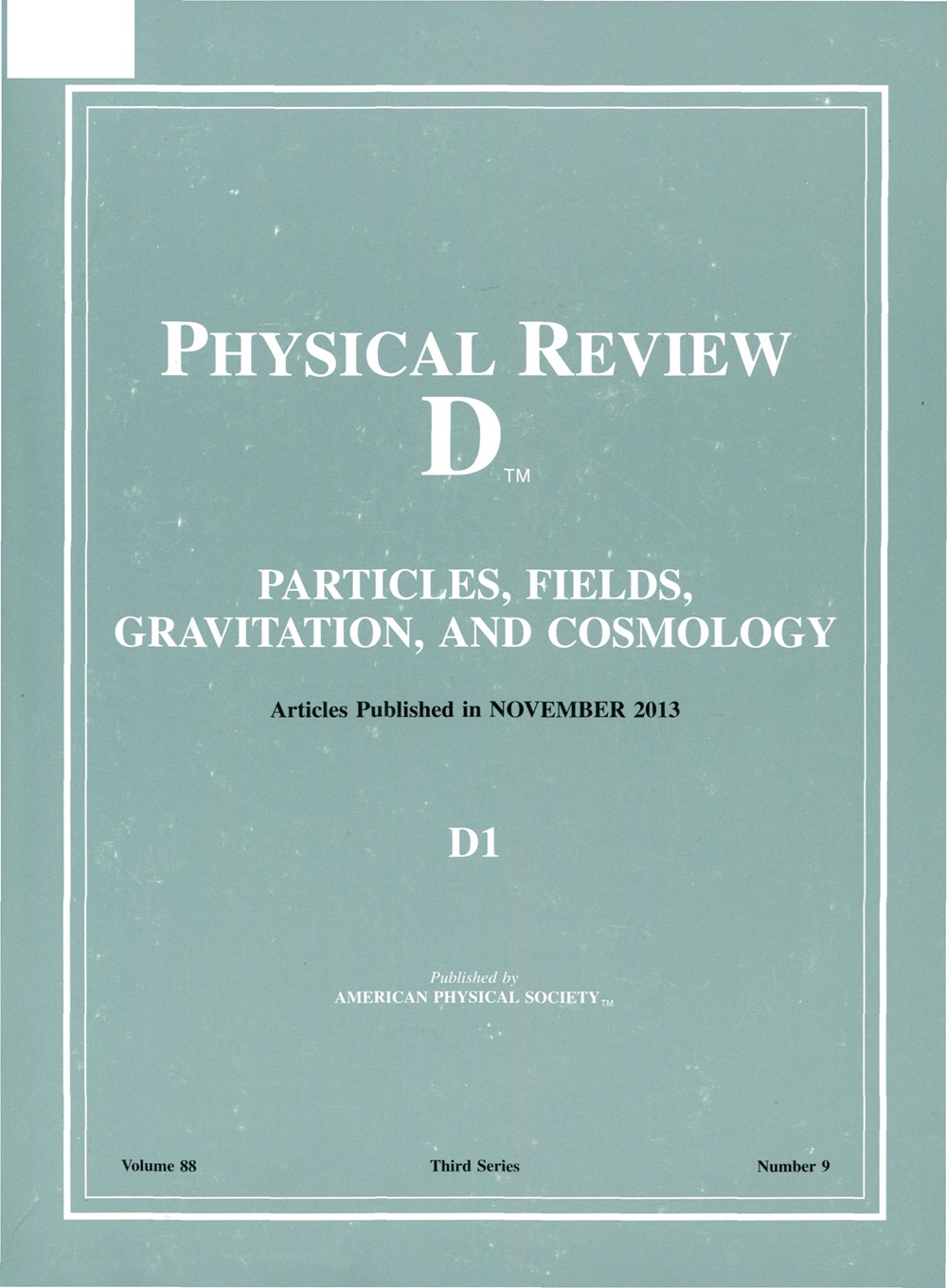Polarization signals from axion-photon resonant conversion in a neutron star magnetosphere
IF 5.3
2区 物理与天体物理
Q1 Physics and Astronomy
引用次数: 0
Abstract
Neutron stars provide ideal astrophysical laboratories for probing new physics beyond the Standard Model. If axions exist, then photons can develop linear polarization during photon-axion conversion in the magnetic field of a neutron star. We find that the plasma in the neutron star magnetosphere could dramatically enhance the polarization through the resonant conversion effect. With the polarization measurements from PSR B0656+14, 4U中子星磁层中轴-光子共振转换的偏振信号
中子星为探索标准模型之外的新物理提供了理想的天体物理实验室。如果轴子存在,那么在中子星磁场中光子-轴子转换过程中,光子就会产生线性极化。我们发现中子星磁层中的等离子体可以通过共振转换效应显著增强极化。利用PSR B0656+14, 4U 0142+61的偏振测量,以及中红外波段的基准偏振测量,我们证明了中子星的光学和红外偏振可以在宽的轴子质量范围(10−11≤ma≤10−3 eV)内对轴-光子耦合提供强约束。2025年由美国物理学会出版
本文章由计算机程序翻译,如有差异,请以英文原文为准。
求助全文
约1分钟内获得全文
求助全文
来源期刊

Physical Review D
物理-天文与天体物理
CiteScore
9.20
自引率
36.00%
发文量
0
审稿时长
2 months
期刊介绍:
Physical Review D (PRD) is a leading journal in elementary particle physics, field theory, gravitation, and cosmology and is one of the top-cited journals in high-energy physics.
PRD covers experimental and theoretical results in all aspects of particle physics, field theory, gravitation and cosmology, including:
Particle physics experiments,
Electroweak interactions,
Strong interactions,
Lattice field theories, lattice QCD,
Beyond the standard model physics,
Phenomenological aspects of field theory, general methods,
Gravity, cosmology, cosmic rays,
Astrophysics and astroparticle physics,
General relativity,
Formal aspects of field theory, field theory in curved space,
String theory, quantum gravity, gauge/gravity duality.
 求助内容:
求助内容: 应助结果提醒方式:
应助结果提醒方式:


